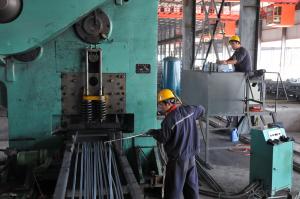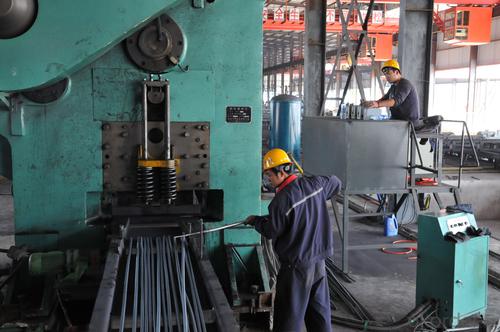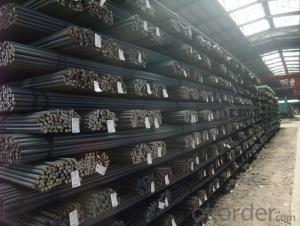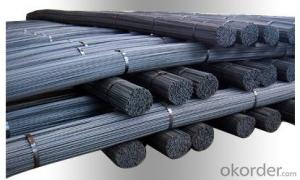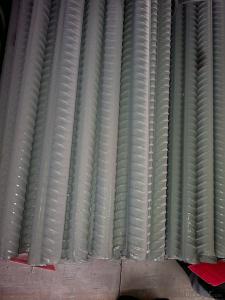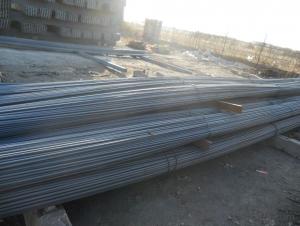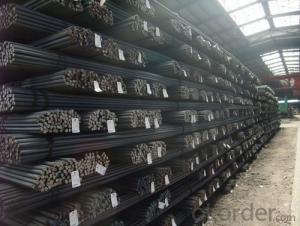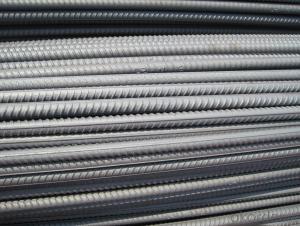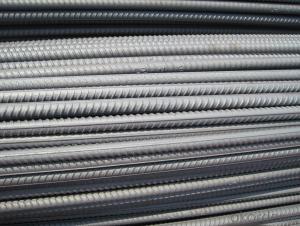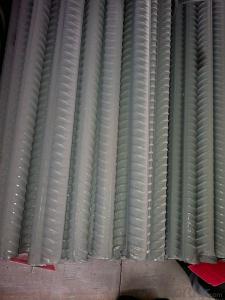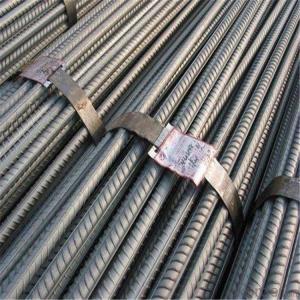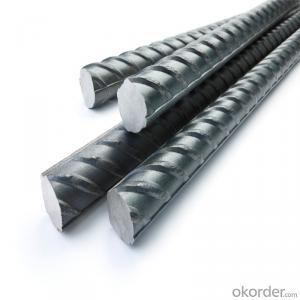Steel Deformed Rebar BS4449 GR460
- Loading Port:
- China Main Port
- Payment Terms:
- TT or LC
- Min Order Qty:
- -
- Supply Capability:
- -
OKorder Service Pledge
OKorder Financial Service
You Might Also Like
Product Description:
OKorder is offering Steel Deformed Rebar BS4449 GR460 at great prices with worldwide shipping. Our supplier is a world-class manufacturer of steel, with our products utilized the world over. OKorder annually supplies products to African, South American and Asian markets. We provide quotations within 24 hours of receiving an inquiry and guarantee competitive prices.
Product Applications:
Steel Deformed Rebar BS4449 GR460 are ideal for structural applications and are widely used in the construction of buildings and bridges, and the manufacturing, petrochemical, and transportation industries.
Product Advantages:
OKorder's Steel Deformed Rebar BS4449 GR460 are durable, strong, and wide variety of sizes.
Main Product Features:
· Premium quality
· Prompt delivery & seaworthy packing (30 days after receiving deposit)
· Can be recycled and reused
· Mill test certification
· Professional Service
· Competitive pricing
Product Specifications:
Manufacture: Hot rolled
Grade: Gr460
Size: 6mm-32mm
Certificates: ISO, SGS, BV, CIQ
Length: 6m – 12m, as per customer request
Packaging: Export packing, nude packing, bundled
| DEFORMED BAR | |
| SIZE d(mm) | theoretical kg/m |
| 6 | 0.222 |
| 8 | 0.395 |
| 10 | 0.617 |
| 12 | 0.888 |
| 14 | 1.21 |
| 16 | 1.58 |
| 18 | 2 |
| 20 | 2.47 |
| 22 | 2.98 |
| 25 | 3.85 |
| 28 | 4.83 |
| 32 | 6.31 |
FAQ:
Q1: Why buy Materials & Equipment from OKorder.com?
A1: All products offered byOKorder.com are carefully selected from China's most reliable manufacturing enterprises. Through its ISO certifications, OKorder.com adheres to the highest standards and a commitment to supply chain safety and customer satisfaction.
Q2: How many tons of steel products could be loaded in containers?
A2: Usually the steel products are delivered by bulk vessel because of the large quantity and the freight. However, there are no bulk vessel enter some seaports so that we have to deliver the cargo by containers. The 6m steel product can be loaded in 20FT container, but the quantity is changed according to the size, usually from 18tons to 25tons.
Q3: what is the difference between actual weight and theoretical weight?
A3: All the section steel has two weights: actual weight and theoretical weight. Actual weight is the weighing out when the product delivered from the mill. Theoretical weight is calculated by pieces. The invoice can be based on each of them as your request.
Images:
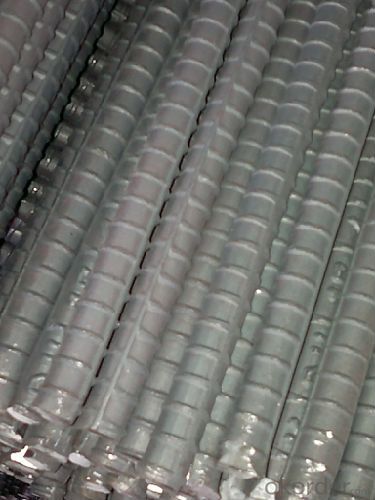
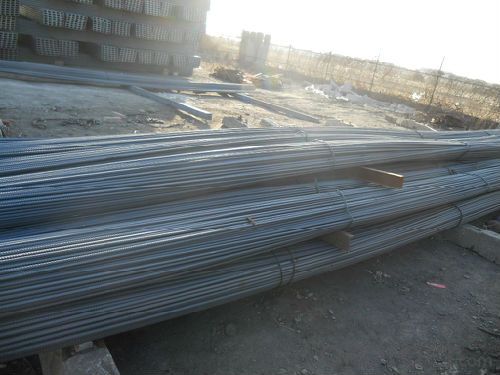
- Q: What is the weight of a standard steel rebar?
- The weight of a standard steel rebar can vary depending on its length and diameter. On average, a 1-meter long steel rebar with a diameter of 12 millimeters weighs around 0.89 kilograms.
- Q: How do steel rebars contribute to the durability of a structure?
- Steel rebars contribute to the durability of a structure by providing reinforcement and strength to concrete. The rebars act as a skeleton within the concrete, increasing its tensile strength and helping to prevent cracking or collapsing under stress. This reinforcement improves the overall structural integrity and longevity of the building, making it more resistant to external forces such as earthquakes, wind, and heavy loads.
- Q: How do steel rebars contribute to the overall sustainability of concrete structures?
- Steel rebars contribute to the overall sustainability of concrete structures in several ways. Firstly, steel rebars enhance the durability and lifespan of concrete structures. By reinforcing the concrete, rebars provide added strength and prevent cracking or structural failures, thereby extending the life of the structure. This reduces the need for frequent repairs or replacements, saving resources and minimizing the environmental impact of construction activities. Moreover, steel rebars are 100% recyclable. At the end of a structure's life cycle, the rebars can be easily removed and recycled, reducing the demand for new raw materials and minimizing waste. This not only conserves natural resources but also reduces greenhouse gas emissions associated with the extraction and production of virgin steel. Additionally, incorporating steel rebars into concrete structures allows for the use of thinner concrete sections. By using less concrete, there is a reduced demand for cement, which is a major contributor to carbon dioxide emissions during its production. Therefore, the use of steel rebars helps to lower the overall carbon footprint of concrete structures. Furthermore, steel rebars can be designed to resist corrosion, which is a common issue in concrete structures exposed to harsh environments or in coastal areas. By providing protection against corrosion, the rebars increase the service life of the structure, reducing the need for maintenance and repairs. This not only saves costs but also reduces the environmental impact associated with maintenance activities. Overall, steel rebars play a crucial role in enhancing the sustainability of concrete structures by improving their durability, enabling recycling, reducing material consumption, and minimizing maintenance requirements. By incorporating steel rebars into concrete construction, we can create long-lasting, environmentally-friendly structures that contribute to a more sustainable built environment.
- Q: What is the effect of high temperatures on steel rebars?
- High temperatures have a significant effect on steel rebars. At high temperatures, steel rebars undergo a process called thermal expansion, which causes them to expand in size. This expansion can result in the concrete surrounding the rebars cracking or spalling, as the increased size of the rebars pushes against the concrete. Additionally, high temperatures can lead to a reduction in the strength and load-bearing capacity of steel rebars. This is due to a phenomenon called tempering, where the heat causes the steel to lose its structural integrity and become weaker. As a result, steel rebars exposed to high temperatures may experience reduced strength and become more susceptible to deformation or failure. Therefore, it is crucial to consider the effect of high temperatures on steel rebars when designing structures or assessing their integrity, especially in environments prone to heat or fire hazards.
- Q: What is the impact of steel rebars on the overall durability of a structure?
- Steel rebars have a significant impact on the overall durability of a structure. These reinforced steel bars enhance the structural integrity by providing tensile strength and resisting the forces that can cause cracking or failure. By reinforcing concrete, steel rebars increase the structure's ability to withstand external pressures, such as heavy loads, seismic activity, or weather conditions. This reinforcement ensures long-term durability, stability, and structural soundness, making steel rebars crucial for constructing resilient and long-lasting buildings and infrastructure.
- Q: Can steel rebars be used in tunnel construction?
- Yes, steel rebars can be used in tunnel construction. They are commonly used to reinforce concrete structures, including tunnel linings, to provide strength and stability to the tunnel. The rebars are embedded within the concrete to enhance its load-bearing capacity and resist the forces exerted on the tunnel walls.
- Q: What is the effect of steel rebars on the thermal conductivity of concrete?
- The presence of steel rebars in concrete has a significant effect on its thermal conductivity. Steel is a good conductor of heat, meaning it can easily transfer thermal energy through its structure. When steel rebars are embedded within concrete, they create a pathway for heat to flow through the material. This thermal conductivity of steel rebars can have both positive and negative implications on the overall thermal performance of concrete structures. On one hand, it can enhance the overall heat transfer within the structure, allowing for more efficient heating or cooling. This can be advantageous in applications where thermal conductivity is desired, such as in building designs that require active temperature control. However, the presence of steel rebars can also lead to increased heat loss or gain depending on the environmental conditions. In situations where there is a temperature difference between the inside and outside of the structure, the steel rebars can act as thermal bridges, allowing heat to escape or enter the building more easily. This can result in higher energy consumption for heating or cooling purposes. To mitigate these potential issues, additional insulation measures can be implemented to reduce the thermal bridging effect caused by steel rebars. This could include using thermal break materials or coatings, or adopting insulation techniques such as adding foam or other insulating materials around the rebars. In summary, steel rebars in concrete have a significant impact on its thermal conductivity. While they can enhance heat transfer within the structure, they can also lead to increased heat loss or gain. Proper insulation measures should be considered to minimize the negative effects of thermal bridging caused by steel rebars.
- Q: What is the role of steel rebars in preventing structural vibrations?
- Steel rebars play a crucial role in preventing structural vibrations by providing reinforcement and stability to concrete structures. The rebars, which are embedded within the concrete, enhance the overall strength and rigidity of the structure, making it more resistant to vibrations caused by external factors such as wind, earthquakes, or heavy machinery. The presence of steel rebars helps to distribute and dissipate the energy generated during vibrations, reducing their amplitude and preventing potential structural damage or collapse.
- Q: What are the different methods of connecting steel rebars together?
- There are several different methods of connecting steel rebars together, depending on the specific requirements of the construction project. Some of the most common methods include: 1. Lap Splicing: This involves overlapping two rebars and then securing them together using steel wire or steel bars. It is a simple and cost-effective method but requires a longer length of rebars. 2. Mechanical Splicing: In this method, a mechanical coupler is used to connect two rebars together. The coupler is usually a sleeve or a collar that is attached to the ends of the rebars, providing a strong and reliable connection. Mechanical splicing is faster and more efficient than lap splicing, and it also allows for flexibility in positioning the rebars. 3. Welding: Welding is another method of connecting steel rebars, where the ends of the rebars are heated and fused together using an electric arc. This creates a strong and permanent connection. However, welding requires skilled labor and can be time-consuming and costly. 4. Threaded Couplers: Threaded couplers are similar to mechanical splicing, but instead of using a sleeve or collar, the rebars are threaded at the ends and then connected using a threaded coupler. This method provides a strong and reliable connection and is often used in larger construction projects. 5. Grout Sleeve Splicing: This method involves placing a grout-filled sleeve between two rebars to create a connection. The grout provides additional strength and stability to the joint. Grout sleeve splicing is commonly used in seismic zones or areas where high strength and ductility are required. 6. Reinforcing Bar Couplers (RBC): RBC is a proprietary method of connecting rebars, where a threaded sleeve is used to connect the rebars. The sleeve is filled with epoxy resin to create a strong bond. RBC offers high load capacity, ease of installation, and resistance to corrosion. It is important to consult with structural engineers and follow building codes and regulations to determine the most appropriate method of connecting steel rebars for a specific construction project.
- Q: What is the role of steel rebars in preventing structural collapse?
- The prevention of structural collapse is a crucial role played by steel rebars, as they reinforce concrete structures. While concrete is strong in compression, it lacks strength in tension. This is where steel rebars come into play, effectively enhancing the tensile strength of the concrete. When a building or any concrete structure is subjected to structural loads, the rebars distribute the load across a wider area. This prevents the concrete from cracking and failing under stress. By providing a means for the concrete to resist tension and bending forces, steel rebars help maintain the integrity and stability of the structure. In addition to improving tensile strength, rebars also increase the overall ductility and flexibility of the concrete. This is especially important during events like earthquakes or high winds, as structures must withstand significant lateral forces. The presence of rebars allows the concrete to absorb and dissipate these forces, reducing the risk of structural failure. Furthermore, steel rebars play a role in preventing structural collapse by resisting the effects of corrosion. When embedded in concrete, the rebars are shielded from moisture and other corrosive elements. This ensures their long-term durability and ability to support the structure. To summarize, steel rebars are essential components in preventing structural collapse. They reinforce concrete structures, enhance tensile strength, improve ductility, resist corrosion, and ultimately contribute to the overall safety and stability of buildings and other concrete constructions.
Send your message to us
Steel Deformed Rebar BS4449 GR460
- Loading Port:
- China Main Port
- Payment Terms:
- TT or LC
- Min Order Qty:
- -
- Supply Capability:
- -
OKorder Service Pledge
OKorder Financial Service
Similar products
Hot products
Hot Searches
Related keywords
